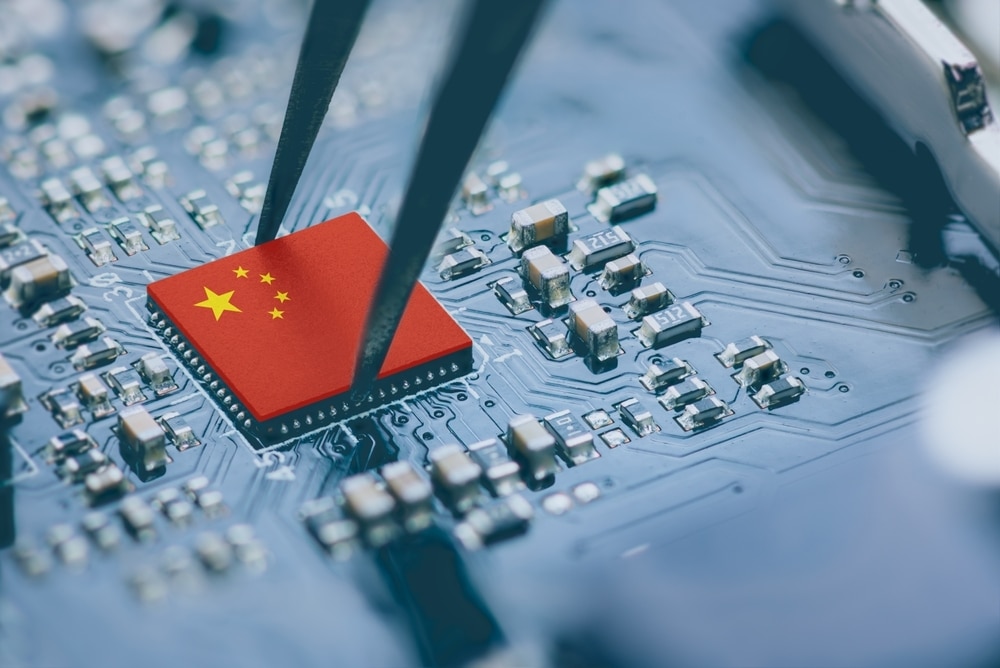This Energy Explained post represents the research and views of the author. It does not necessarily represent the views of the Center on Global Energy Policy. The piece may be subject to further revision. Contributions to SIPA for the benefit of CGEP are general use gifts, which gives the Center discretion in how it allocates these funds. Rare cases of sponsored projects are clearly indicated.
For a full list of financial supporters of the Center on Global Energy Policy at Columbia University SIPA, please visit our website at Our Partners. See below a list of members that are currently in CGEP’s Visionary Circle. This list is updated periodically.
On October 20, China officially unveiled its intention to enforce export license requirements on graphite, a critical mineral vital for battery anodes.[1] This move comes on the heels of a similar restriction placed on two rare earth elements—and should be seen as part of China’s broader strategy of flexing its economic muscle in response to escalating trade tensions with the United States.
Here the author discusses the implications of China’s latest move, which signals its readiness to make exports more challenging if the United States pursues a similar path, arguing that a trade war is now firmly settling into the markets of energy transition technology. In essence, the global landscape is witnessing a surge in trade restrictions initiated by the world’s two major economies and greenhouse gas emitters, vying for a competitive edge in key components critical for the energy transition.
From Chips to Batteries
China’s announced licensing requirements regarding graphite diverge from the chip focus that has been central to recent US-China trade tensions. Instead, it takes aim at the battery sector, where graphite serves as a vital component in anodes. The market for graphite has doubled over the past five years and is expected to triple in the next five.[2] China boasts a commanding position in the graphite market, with a 65 percent share of natural graphite production, over 75 percent of synthetic graphite, and more than 90 percent of spherical graphite, the type primarily used in batteries. It also producers more than 90 percent of the world’s anodes.
It’s hard to view this action outside the context of the escalating trade tensions between the US and China. The focal point of China’s export restrictions has been critical minerals, especially those used in semiconductor chips, the building blocks of modern technology. In response, the US has played its hand, taking steps that mirror China’s approach over the better part of two decades. The US CHIPS+ Act, for instance, restricts companies from expanding advanced chip production in China following the receipt of US subsidies.[3] Additionally, the US requires companies to obtain licenses for selling advanced semiconductors and related manufacturing equipment to China.[4] China, likely perceiving these moves as a next level of aggression in the so-called Chips War, responded with its own further restrictions. In August 2023, it introduced a rule demanding exporters of gallium and germanium, two critical rare earth elements crucial for chip production, to obtain licenses.[5]
The timing of the graphite export licensing requirement is noteworthy. The US Inflation Reduction Act (IRA) mandates that minerals used in batteries should not originate from foreign entities of concern, China being one of them. The US government is now poised to release guidance on implementing this measure in the coming weeks.[6] In the meantime, the Biden administration recently also heightened export controls on advanced chips destined for China.[7] Seen in this light, China’s latest move could indeed be interpreted as a preemptive one, cautioning against overly stringent supply restrictions on Chinese materials.
Geopolitics, Yes, But Also Industrial Policy
China’s past deployment of export restrictions is exemplified in its 2010 dispute with Japan when it significantly curtailed rare earth exports to Japan in response to a maritime conflict.[8] This episode sent a shock wave through China’s trade partners, which saw this as China’s willingness to use its economic might for geopolitical leverage.[9]
That’s only part of the story, though. Beyond foreign policy objectives, China’s export restrictions also serve to boost the competitiveness of its domestic high-value industries. Even before 2010, the EU, the US, and Mexico had launched a complaint against China’s mineral export restrictions before the World Trade Organization.[10] Even though China lost that case, it continued general export restrictions.[11]
At the heart of such measures is a domestic industrial policy strategy that encourages the growth of downstream players involved in the production of magnets, semiconductors, and energy technologies.[12] Given that China has ramped up its involvement in graphite through nationalization of mines and state-owned enterprises over the past few years,[13] it could have exerted pressure on trade partners in different, less overt ways than the new licensing requirement.
In the United States, the IRA and the CHIPS+ Act echo China’s tactics from over a decade ago, employing domestic subsidies and industrial policies in combination with local content requirements, to foster the domestic production of strategic technologies. Many of these measures, specifically the IRA’s local content requirements, also run afoul of WTO regulations.
Impacts of China’s Grip on the Anode Market
In considering the impact of these developments, it’s important to distinguish between actual and potential effects. The imposition of licensing requirements does not inherently signify a reduction in graphite trade. Nevertheless, it does offer the Chinese government an additional lever with which to exert influence in the future. Even if China’s grasp on the natural graphite market isn’t as extensive as it is with rare earth elements, the real challenge here is that China does control a significant portion of the natural, synthetic, and spherical graphite market that is of relevance in making battery anodes for electric vehicles (EVs).
The difficulty lies in developing alternatives. First, around 35 percent of natural graphite production occurs outside of China, but that capacity needs to be converted into spherical graphite, of which over 95 percent is produced in China.[14]
Second, synthetic graphite, which accounts for about 70 percent of the EV anode market, does not rely on natural graphite and is instead produced from petroleum coke and coal tar pitch, both readily available outside of China. Nevertheless, overcapacity in the synthetic graphite market, partly due to overproduction within China, dampens incentives for investments.[15]
And third, while alternatives like silicon anodes are gaining traction, they still grapple with technical issues, such as expansion during charging and discharging that’s more pronounced and, therefore, problematic compared to graphite-based anodes.[16]
De-Escalating Global Trade Tensions for the Energy Transition
In the grand scheme of things, China’s firm grip on the graphite and anode market means that any restrictions it imposes have the potential to disrupt the supply chain and the deployment of EVs and batteries outside of China.
The required timeframes for graphite mining, spherical graphite production, and anode production, which encompass permitting, infrastructure development, and quality verification, are lengthy. It’s during these critical years that the global competitiveness of EV and battery manufacturers vis-à-vis their Chinese counterparts may be determined.
Global battery and EV manufacturers need low-cost, quality mass supply today, not in 5 to 10 years’ time. In the near future, their competitiveness hinges on their ability to access high-quality, cost-effective Chinese components. Despite the challenges posed by China’s moves, it may make strategic sense for policies to prioritize pragmatic cooperation over excessive confrontation. This means encouraging and financially supporting diversification away from China over a longer period of time, while simultaneously recognizing the need for integrated global supply chains in the immediate future.
CGEP’s Visionary Circle
Corporate Partnerships
Occidental Petroleum Corporation
Tellurian Inc
Foundations and Individual Donors
Anonymous
Anonymous
the bedari collective
Jay Bernstein
Breakthrough Energy LLC
Children’s Investment Fund Foundation (CIFF)
Arjun Murti
Ray Rothrock
Kimberly and Scott Sheffield
Notes
[1] https://www.reuters.com/markets/commodities/china-curbs-graphite-exports-latest-critical-minerals-squeeze-2023-10-20/
[2] Adam Megginson, “Graphite: Building Robust Anode Supply Chains,” Presentation at Battery Gigafactories APAC 2023, Tokyo, September 21, 2023.
[3] https://www.pwc.com/us/en/library/chips-act.html
[4] https://www.reuters.com/technology/sk-hynix-says-it-will-seek-out-license-chinese-memory-chip-factory-2022-10-07/
[5] https://thehill.com/policy/energy-environment/4079680-china-imposes-export-controls-on-rare-minerals-used-to-make-semiconductor-chips/
[6] https://www.energypolicy.columbia.edu/publications/the-ira-and-the-us-battery-supply-chain-one-year-on/
[7] https://www.reuters.com/technology/sk-hynix-says-it-will-seek-out-license-chinese-memory-chip-factory-2022-10-07/
[8] https://cepr.org/voxeu/columns/revisiting-china-japan-rare-earths-dispute-2010
[9] https://www.nytimes.com/2010/09/23/business/global/23rare.html
[10] https://www.wto.org/english/tratop_e/dispu_e/cases_e/ds394_e.htm
[11] https://www.wto.org/english/tratop_e/dispu_e/cases_e/ds431_e.htm
[12] https://www.congress.gov/116/meeting/house/109423/documents/HMTG-116-II06-20190509-SD002.pdf
[13] Tim Nelson, “Graphite market for EV batteries,” Presentation at Battery Gigafactories APAC 2023, Tokyo, October 3, 2023.
[14] https://source.benchmarkminerals.com/article/china-graphite-export-restrictions-could-hinder-ex-china-anode-development
[15] Tim Nelson, “Graphite market for EV batteries,” Presentation at Battery Gigafactories APAC 2023, Tokyo, October 3, 2023.
[16] https://www.sciencedirect.com/science/article/pii/S2468606922002830










